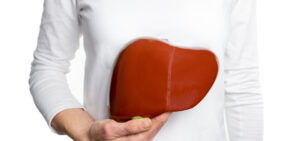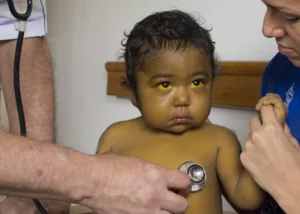Fatty liver disease is a condition that involves the accumulation of large amounts of fat in the liver. There are two types of this disease, one that is caused by alcohol and the other that is not, in both cases it is a silent pathology.
ALCOHOLIC FATTY LIVER DISEASE
Its cause lies in the excessive consumption of alcohol, also known as alcoholic liver steatosis. It can trigger other diseases: alcoholic liver disease, alcoholic hepatitis and cirrhosis.
Drinking alcohol for a long time increases the probability of developing the disease. This risk is increased in women, individuals who are obese, and those with certain genetic mutations.
This condition usually presents itself without symptoms, but if there are any, they include: loss of weight and energy, decreased appetite; nausea, stomach pain; even, small blood vessels in the skin that are red and resemble the shape of a spider.
Later, fluid retention in the abdomen and legs, bruising and bleeding may occur. Also, the palms of the hands may become reddish, passing clay-colored stools; in the specific case of men, impotence, the breasts may swell and the testicles may shrink.
For treatment of alcoholic fatty liver disease, it is important to stop drinking alcohol. In this regard, it may be appropriate to visit a psychologist or go to rehabilitation.

NON-ALCOHOLIC FATTY LIVER DISEASE
It is that disease of the fatty liver that is not linked to drinking alcohol, and is subdivided into two types. One of them is simple fatty liver, which occurs when there is fat in the liver and the inflammation or cell damage in the liver is little or none. The second is non-alcoholic hepatic steatosis, in which case there is inflammation and cell damage in the liver; fat is also present and can lead to cirrhosis or liver cancer.
This pathology usually has no symptoms; sometimes it can present fatigue or discomfort in the abdomen in the upper right side.
Although the exact cause of non-alcoholic fatty liver is unknown, it is known that the disease is more common in people with pre-diabetes, type 2 diabetes, obesity and polycystic ovary syndrome.
Also high levels of blood fats (triglycerides); hypothyroidism, hypopituitarism. As well as high levels of cholesterol, metabolic syndrome and sleep apnea (disorder in which breathing stops and starts again).

To treat non-alcoholic fatty liver disease, weight loss is advised, with the goal of decreasing the amount of fat, inflammation, and liver fibrosis (scarring in the liver).
It should be noted that both alcoholic and non-alcoholic fatty liver disease can result in cirrhosis (a disease that scars and affects liver function). To treat this disease, specialists resort to medications, operations and other procedures.
If cirrhosis develops into liver failure, a liver transplant may be necessary. In addition, alcohol consumption increases the risk of liver failure.
On the other hand, it is important to mention that to prevent both types of fatty liver disease, it is recommended to maintain a healthy lifestyle. In this sense, it is vital to exercise frequently and to maintain a healthy and balanced diet, limiting the consumption of salt and sugar.
It is also important that when a person believes they have fatty liver disease, they seek help from a medical professional to make a diagnosis.
If you have the disease, it is important to clarify any doubts you may have with your treating physician and follow the instructions he or she recommends.














